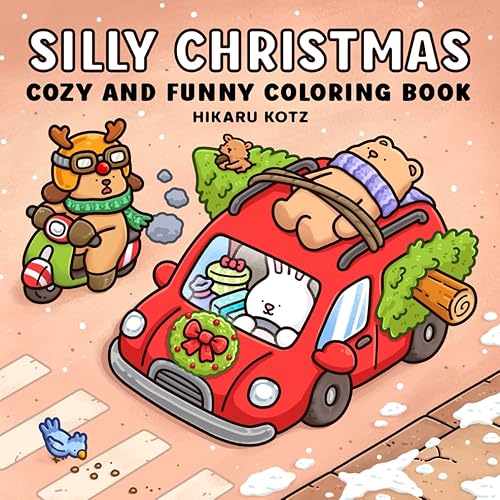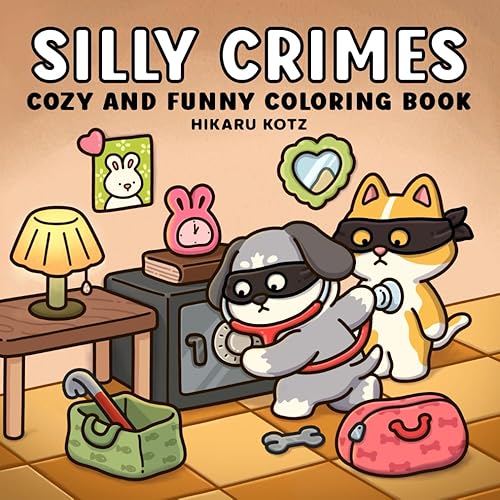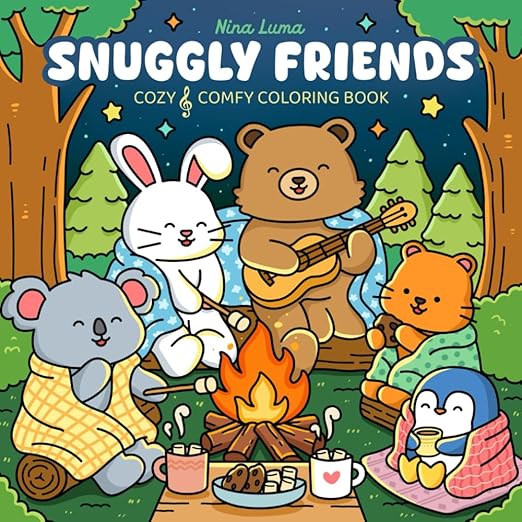
Animal Coloring Books
Explore wildlife through art with our curated collection of animal coloring books featuring creatures from around the world.
Welcome to our collection of animal coloring books! Whether you're fascinated by wildlife, love pets, or want to explore creatures from around the world, our curated selection offers something for every animal enthusiast.
Our animal coloring books feature:
- Realistic wildlife illustrations and anatomically accurate designs
- Whimsical and creative interpretations of beloved creatures
- Educational content about habitats, behaviors, and conservation
- Range from simple designs for kids to intricate patterns for adults
- Creatures from land, sea, and sky across all continents
4 Books in this Collection
Why Choose Animal Coloring Books?
Educational Value
Learn about different species, their habitats, and unique characteristics while coloring. Many books include fascinating facts about each animal.
Stress Relief & Mindfulness
The repetitive nature of coloring intricate fur patterns and scales provides a meditative experience that calms the mind.
Artistic Development
Practice color blending, shading techniques, and texture creation as you bring animals to life on the page.
Conservation Awareness
Many animal coloring books highlight endangered species, raising awareness about wildlife conservation efforts.
Popular Animal Themes
- Woodland Creatures: Deer, foxes, bears, rabbits, and forest dwellers
- Ocean Life: Dolphins, whales, sea turtles, tropical fish, and coral reefs
- Safari Animals: Lions, elephants, giraffes, zebras, and African wildlife
- Birds: Hummingbirds, owls, peacocks, parrots, and songbirds
- Domestic Pets: Dogs, cats, horses, and beloved companions
- Insects & Butterflies: Intricate wing patterns and garden creatures
- Reptiles & Amphibians: Snakes, lizards, frogs, and turtles
- Fantasy Animals: Unicorns, dragons, and mythical creatures
🎨 Pro Tip:
For realistic animal coloring, study reference photos to understand natural color variations, fur direction, and light/shadow patterns. For creative interpretations, experiment with unexpected color combinations!
Tips for Coloring Animals
- Start with light base colors and gradually build up layers for depth
- Use different pressure levels to create texture in fur, feathers, or scales
- Pay attention to light sources for realistic shading
- Blend colors where different fur patterns meet for natural transitions
- Leave white areas for highlights in eyes and on wet surfaces
- Use fine-tipped markers or colored pencils for intricate details
How to Choose Your Animal Coloring Book
- Skill Level: Beginners should choose books with larger, simpler designs. Advanced colorists can enjoy intricate fur patterns and detailed backgrounds.
- Favorite Animals: Select books featuring creatures you love or want to learn more about.
- Art Style: Decide between realistic illustrations, mandala-style patterns, or whimsical cartoon designs.
- Paper Quality: For markers or watercolors, choose thick paper (100gsm+) to prevent bleed-through.
- Educational Content: Some books include fun facts, habitat information, and conservation messages.
Explore our collection of animal coloring books and embark on an artistic safari through the natural world. From the depths of the ocean to the heights of the mountains, bring the beauty of wildlife to life with color!
Quick Answers
What types of animals are featured in animal coloring books?
Animal coloring books feature creatures from every habitat: woodland animals (deer, foxes, bears), ocean life (dolphins, whales, sea turtles), safari animals (lions, elephants, giraffes), birds, domestic pets, insects, reptiles, and even fantasy creatures like unicorns and dragons.
Are animal coloring books good for learning about wildlife?
Yes! Many animal coloring books include educational content like fun facts about species, their habitats, behaviors, and conservation status. They combine artistic expression with learning about biodiversity and wildlife protection.
Should I choose realistic or whimsical animal coloring books?
It depends on your goals! Realistic illustrations are great for learning natural colors and practicing shading techniques, while whimsical designs encourage creativity and imagination with unexpected color combinations. Many colorists enjoy having both styles in their collection.
What's the best medium for coloring animal books?
Colored pencils are ideal for creating fur, feather, and scale textures through layering and directional strokes. Markers work well for bold, vibrant animals, while watercolors can create beautiful blended effects. Choose based on your preferred style and the paper quality of your book.
Key Highlights
- ✓Animal coloring books range from simple designs for kids aged 3-8 to intricate patterns with detailed fur and backgrounds perfect for adults
- ✓Features creatures from every habitat including woodland animals, ocean life, safari animals, birds, domestic pets, insects, and reptiles
- ✓Many books include educational content about species, habitats, behaviors, and conservation efforts for endangered animals
- ✓Offers both realistic anatomically accurate illustrations and whimsical creative interpretations for different artistic preferences
- ✓Provides therapeutic benefits through the meditative repetition of coloring intricate fur patterns, feathers, and scales while developing shading and texture techniques
Who Is This For?
👍 Best For
Animal lovers of all ages who want to explore wildlife through art, from kids learning about creatures to adults seeking stress relief through detailed fur patterns and textures. Perfect for those interested in conservation awareness, educational content about habitats and species, and developing artistic skills like color blending, shading, and texture creation. Ideal for both realistic coloring practice and creative imagination with whimsical interpretations.
⚠️ Not Best For
Those seeking exclusively human subjects, urban landscapes, or abstract geometric patterns without living creatures. Not ideal for people who prefer pure mandala designs without animal themes, or colorists looking only for seasonal holiday content rather than year-round wildlife subjects. May not suit those wanting exclusively one type of animal if they choose a diverse collection rather than specialized books.
Unique Features
- •Wide variety covering all habitats: land, sea, sky, from woodland creatures to ocean life to safari animals
- •Educational value with fun facts about species, habitats, behaviors, and conservation status included in many books
- •Range of art styles from realistic anatomically accurate wildlife to whimsical fantasy creatures like unicorns and dragons
- •Therapeutic texture practice with fur, feathers, and scales requiring different coloring techniques and directional strokes
- •Conservation awareness focus with many books highlighting endangered species and wildlife protection efforts
Frequently Asked Questions
What age range are animal coloring books suitable for?
Animal coloring books are available for all ages! Simple designs with bold outlines work great for kids aged 3-8, while more detailed illustrations with intricate patterns are perfect for teens and adults. Many books specify age recommendations on their covers.
Should I color animals realistically or can I use creative colors?
Both approaches are wonderful! Realistic coloring helps you learn about natural animal colors and patterns, which is educational and meditative. Creative coloring with unexpected colors (like purple elephants or rainbow zebras) encourages imagination and artistic freedom. Choose based on your mood and goals!
What's the best way to color fur, feathers, and scales?
For fur, use short strokes in the direction of hair growth and layer different shades for depth. For feathers, follow the natural direction and overlap patterns. For scales, create dimension by making some darker and leaving highlights. Colored pencils work especially well for these textures because you can build up layers gradually.
Do animal coloring books have educational value?
Yes! Many animal coloring books include fun facts about species, their habitats, behaviors, and conservation status. They help children and adults learn about biodiversity, endangered species, and the importance of wildlife protection while enjoying a creative activity.



